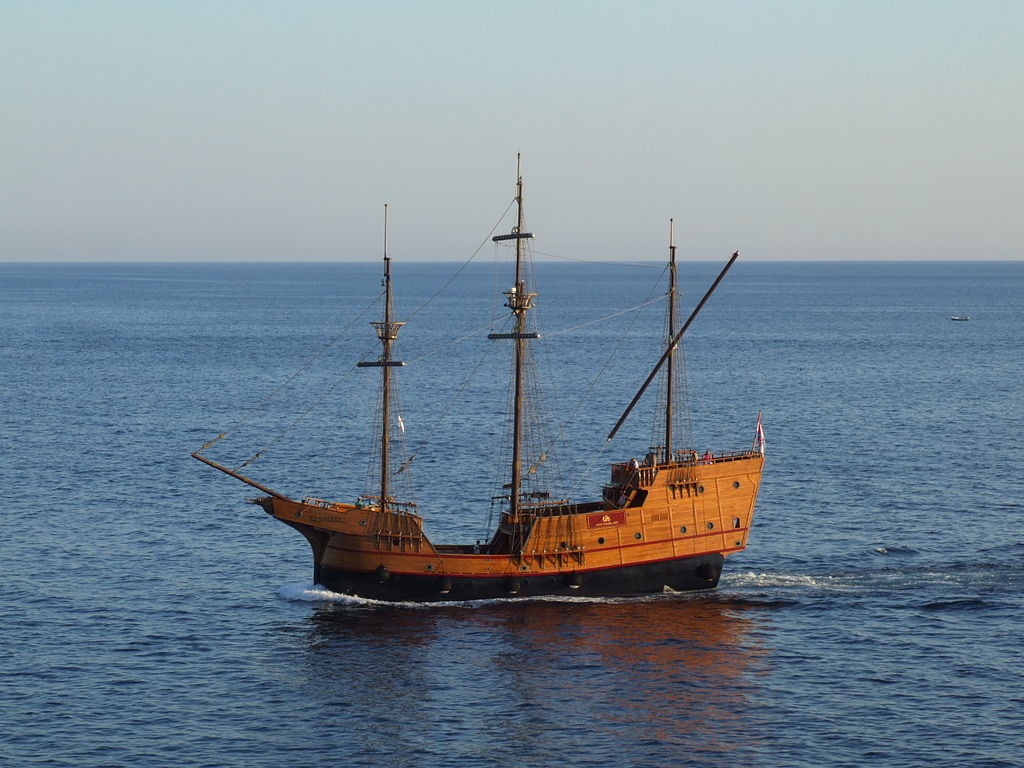The Global Christian Mission: The Maritime Global Expansion
It was the Portuguese, the Spanish, the Netherlanders, the Genoese of Italy, and the English who set the pace for the maritime expansion of the Gospel. The Netherlanders, the English, and the growing cities in northern France were, nevertheless, latecomers compared to the Portuguese and Castilians who ruled the waves from 1483 to 1496. These ventures were primarily for commerce, but the fleets that went out had not only chaplains but also potential settlers who were of the Christian laity.

Replica of the Dubrovnik carrack or argosy, a trading ship from the 15th and 16th century.
Image: Marcin Szala/Wikimedia Commons.
Of the previously mentioned, it was Portugal who led the way in the maritime expansion of the gospel. The island of Goa just off the northwestern coast of India became the site of the first Portuguese Roman Catholic bishopric. It was from Goa that Roman Catholic believers spread over into India. Similarly, it was from the Portuguese settlement of Rio de Janiero that Jesuit missions were carried out within the vast hinterlands of Brazil.
Santo Domingo is the oldest city in North America, settled by Spanish settlers who were on board the Spanish flotilla captained by Christopher Columbus. Santo Domingo became the staging point for Spanish missions among the Native Americans. It was a slow start for the Spanish mission as the first settlers who shared Columbus’ devotion to the Christian Scriptures were few. Most wanted to use the Native Americans as forced labor. Conspicuous among these few contrarians was Bartolomé de las Casas. In 1493, as a youth, Las Casas witnessed the return of Columbus from his first voyage. After traveling to Hispaniola on a later voyage into the Caribbean, Las Casas returned to Spain where he studied for the ministry and was afterward ordained as a deacon. In 1507, he was accepted as priest within the Spanish Roman Catholic Church. In 1522, he identified with the Dominican order, and as a firebrand for Native rights, fair treatment, and dignity. In his publication, The History of the Indies, and in later publications, and then direct appeals to the Pope in Rome, the Spanish Cortes [Spanish Parliament], and Spanish officials in the Americas, he got his wish. The Pope came down on the side of the Native Americans.
In 1534, Las Casas wrote his famous De Unico Vocationes Modo (“The Only Way to Draw All People to a Living Faith”) which drew attention not only in Spanish and Portuguese America but also in Europe. It was expanded in 1537 and submitted to King Charles I of Spain who soon thereafter became Holy Roman Emperor Charles V. Las Casas drew upon Matthew 28:19-20 and Romans 10:17 and made a distinction between “True evangelization” and “false evangelization.”
By that time, the Protestant Reformation was well underway and the work of Las Casas, Ignatius Loyola, and Francis Xavier did not escape notice as the news circulated fast throughout Europe. Furthermore, these initial missionaries joined with Girolamo Savonarola, John Colet, and Desidarius Erasmus to pave the road for Martin Luther and the Protestant Reformation. Indeed, Erasmus has been characterized as having “laid the egg that Luther hatched.”
While Las Casas, Loyola, and Xavier did not split from the Roman Catholic Church, they were critical of the existing Roman Catholic administration and accretions to both Christian praxis and theology. Ignatius Loyola and Francis Xavier were responsible for forming of the Society of Jesus, better known as the Jesuit Order. The Jesuit Order was both late in gaining approval from the Vatican and was long a thorn in its side because of its preaching and teaching that remained critical of Roman Catholic leadership and its unwillingness to be answerable to anyone except the Lord Jesus Christ. Xavier, born on April 7, 1506, near Saguesa in Navarre, he worked with the Portuguese Catholic missionaries, like Loyola did, and was himself the most far-reaching of the missionaries. He traveled by ship to India and on to China, preaching and teaching the Gospel of Jesus and establishing Christian fellowships everywhere he went.
In 1525, Xavier matriculated at the University of Paris. It was there he met Ignatius of Loyola who also studied there. Both men were also contemporaries of another University of Paris student who would figure in the world Christian movement, John Calvin, though their paths diverged greatly in the unfolding Protestant Reformation. The Jesuit Order and the Reformation led by Luther, Calvin, and Zwingli were contemporaneous, each of which would have lasting effects upon the Christian world mission. The evangelical fervor generated by Luther, the push for reform by Calvin and Zwingli, combined with the Catholic Reformation spearheaded by Loyola and Xavier would have a lasting effect.
Category: Church History, Winter 2020


